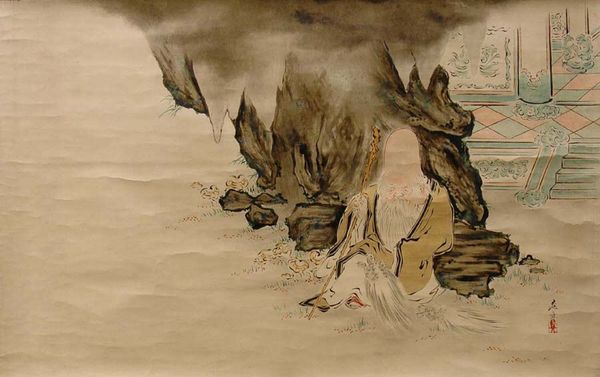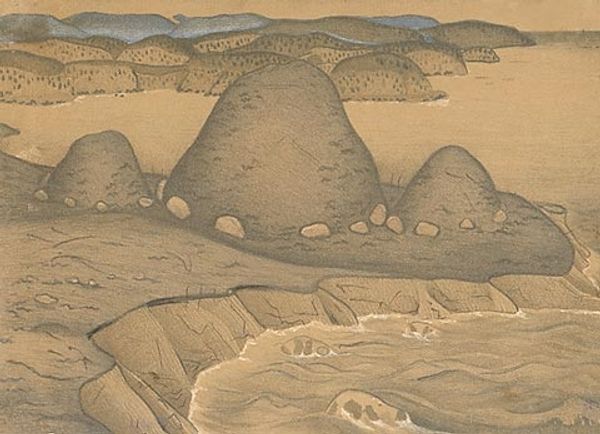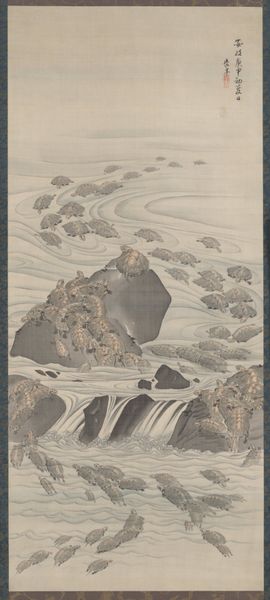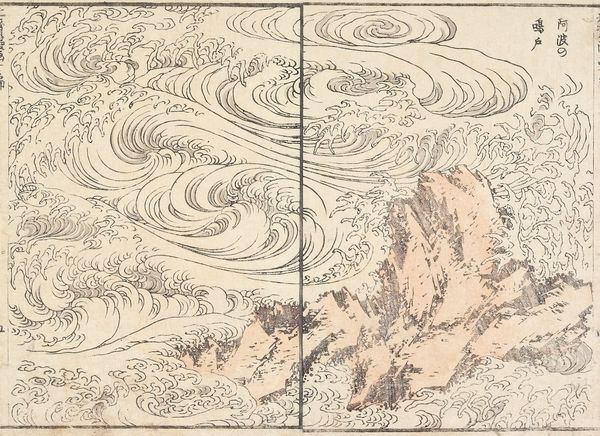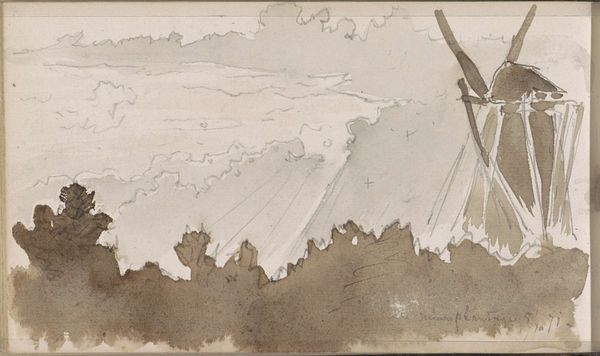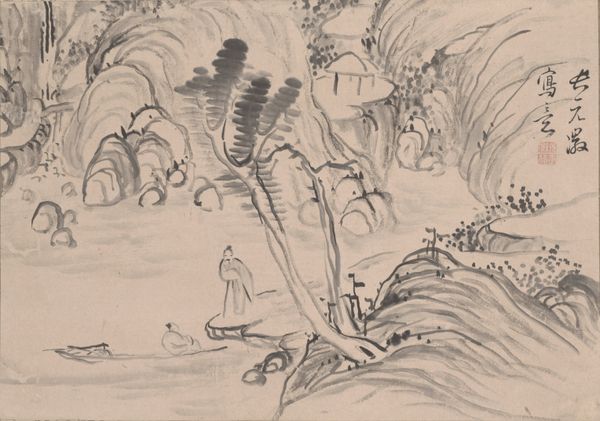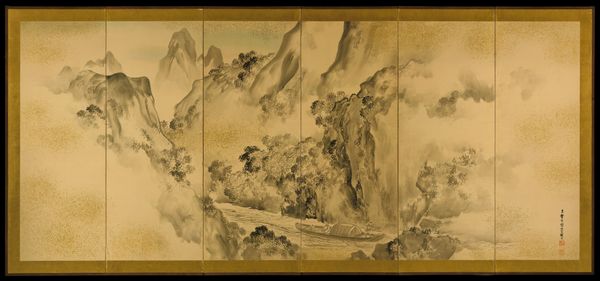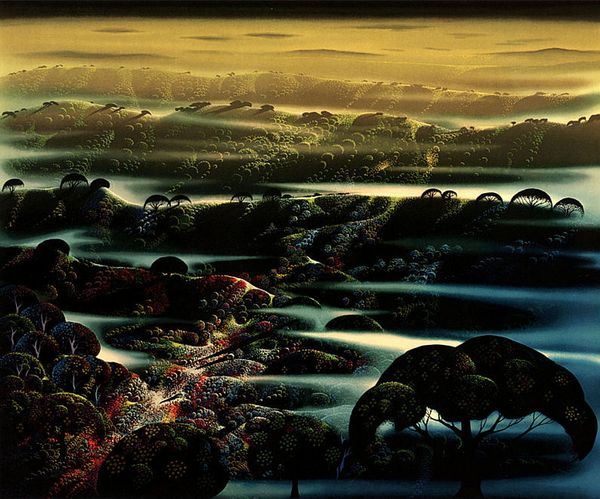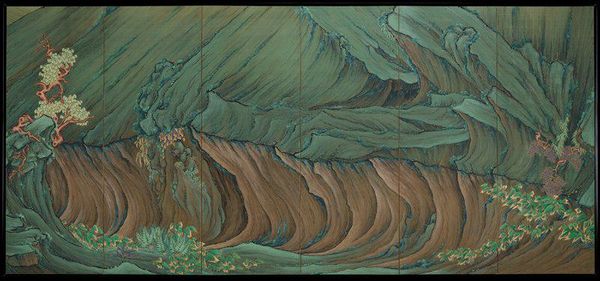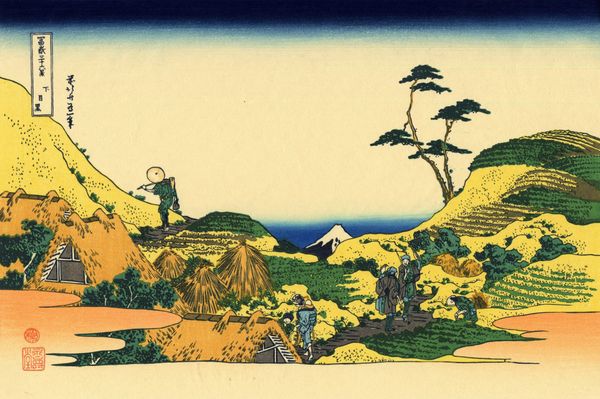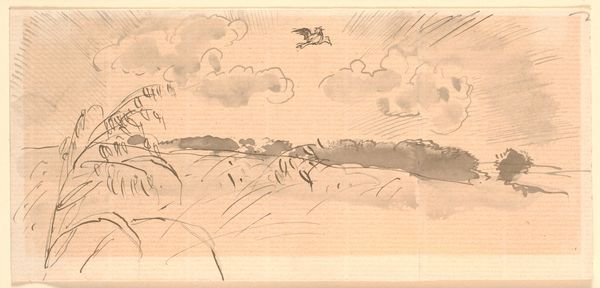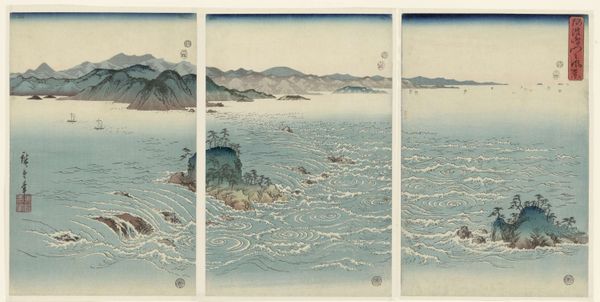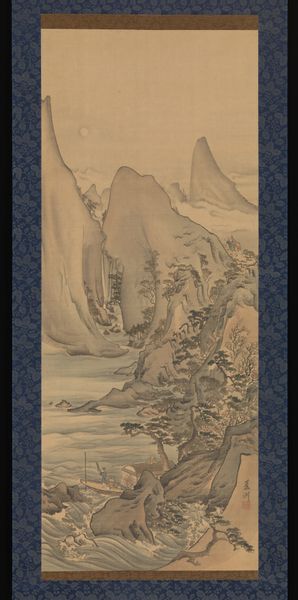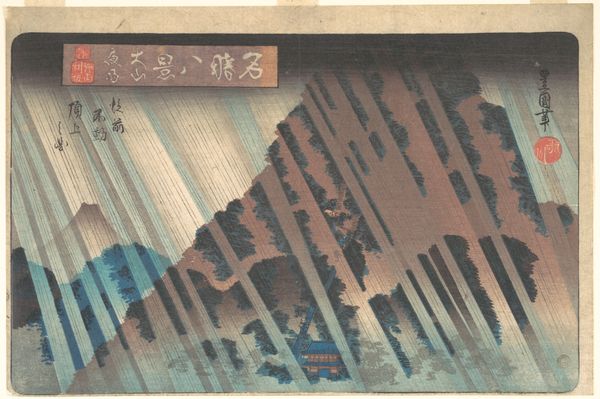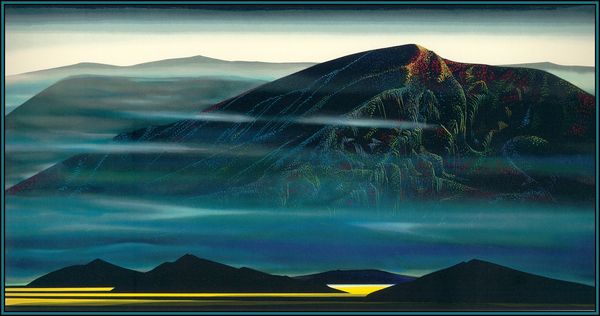![Volcanic Landscape [left of a pair] by Irie Shikai](/_next/image?url=https%3A%2F%2Fd2w8kbdekdi1gv.cloudfront.net%2FeyJidWNrZXQiOiAiYXJ0ZXJhLWltYWdlcy1idWNrZXQiLCAia2V5IjogImFydHdvcmtzLzMwMDg5YTJlLWNlOTItNDMyZC1iMzg4LWRkMjAzMTE2MjliNC8zMDA4OWEyZS1jZTkyLTQzMmQtYjM4OC1kZDIwMzExNjI5YjRfZnVsbC5qcGciLCAiZWRpdHMiOiB7InJlc2l6ZSI6IHsid2lkdGgiOiAxOTIwLCAiaGVpZ2h0IjogMTkyMCwgImZpdCI6ICJpbnNpZGUifX19&w=1920&q=75)
Volcanic Landscape [left of a pair] 1916
irieshikai
abstract expressionism
abstract painting
fauvism
impressionist landscape
japan
handmade artwork painting
fluid art
naive art
munch-inspired
pattern in nature
expressionist
Irie Shikai’s 1916 six-panel screen, *Volcanic Landscape* (left of a pair), depicts a breathtaking view of a mountainous landscape. The screen is a striking example of the artist's mastery of ink and color. The artist uses subtle gradations of green and brown to depict the rocky, layered slopes of the mountain, while a thin band of red suggests the glowing heat of a volcanic eruption. The mountainous scene is reminiscent of traditional Japanese landscapes, but the use of color and perspective creates a sense of modernity. The work is part of a pair, creating a panoramic scene when viewed together. *Volcanic Landscape* was created during a time of significant social and political change in Japan, and the work’s combination of traditional and modern elements reflects the complexities of this era.
Comments
Across the 12 panels of this pair of folding screens, a wide channel cuts through wavelike emerald-green mountains brought to life through an abundance of expensive mineral and metallic pigments—malachite, azurite, and gold. In the lengthy inscription—written in Chinese and brushed in ancient script—Irie Shikai cites the enigmatic opening lines of Chapter 28 (“Returning to Simplicity”) of the Dao De Jing (also Tao Te Ching), the ancient Chinese text, as the inspiration for this magical composition: “Who knows how white attracts, Yet always keeps himself within black’s shade." Shikai first studied painting with local artists in his native Fukuoka before briefly joining an ultra-right-wing nationalist movement in midlife. During this time, he became familiar with that movement’s leader, Tōyama Mitsuru, and the coal barons from Fukuoka who funded Tōyama (the kind of wealthy patrons who might have commissioned a deluxe painting like this pair of screens). Shikai eventually drifted away from right-wing politics and devoted himself again to painting, finding inspiration in the works of the earlier Japanese literati painter Tanomura Chikuden (1777–1835).
Join the conversation
Join millions of artists and users on Artera today and experience the ultimate creative platform.
